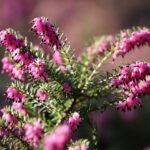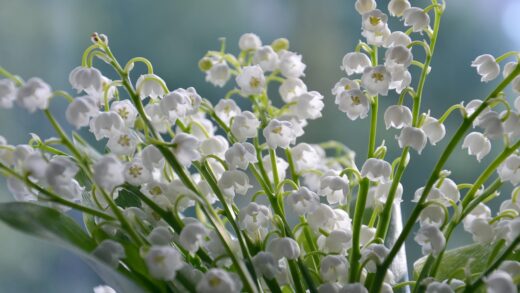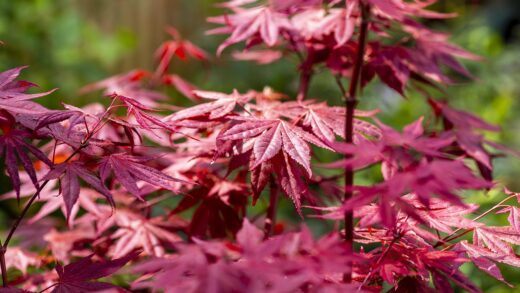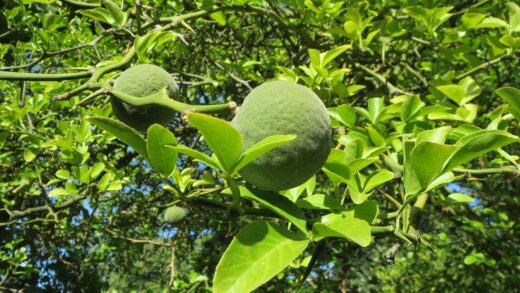Understanding the specific water requirements of pineapple sage is fundamental to its health and vitality, as improper irrigation is one of the most common pitfalls in its cultivation. This plant performs best with a consistent supply of moisture, particularly during its active growth period in the spring and summer. However, this need for moisture is critically balanced by an extreme intolerance for waterlogged soil. The key to successful watering is to aim for soil that is evenly moist but never saturated. This mimics the conditions of its native habitat, where it would experience periods of rainfall followed by good drainage. Letting the top layer of soil, about two to three centimeters deep, dry out between waterings is a reliable guideline to prevent overwatering and the associated risk of root rot.
The frequency and volume of watering are not static but must be adapted to several environmental factors. The plant’s needs will change dramatically based on the climate, the time of year, and its planting location. During the hot, dry spells of mid-summer, when the plant is growing rapidly, it will require more frequent and deeper watering than in the cooler, shorter days of spring or autumn. Similarly, a pineapple sage planted in a porous terracotta container that dries out quickly will need to be watered far more often than one planted in a moisture-retentive garden bed. Constant observation of both the plant and the soil is therefore more important than adhering to a rigid, predetermined schedule.
The signs of both under- and overwatering can be surprisingly similar to the untrained eye, often manifesting as wilting leaves. However, a closer inspection reveals key differences. An under-watered plant will wilt because there is not enough turgor pressure in its cells, and its leaves may feel dry and crispy; it will typically recover quickly after a good drink. An over-watered plant, on the other hand, wilts because its roots are suffocating in anaerobic, waterlogged soil and are unable to function properly. In this case, the wilting may be accompanied by yellowing lower leaves, a soft or mushy stem base, and the soil will be noticeably wet. Correctly diagnosing the cause is crucial before taking corrective action.
Ultimately, the goal of your irrigation strategy should be to encourage the development of a deep, extensive root system. This is best achieved through deep, infrequent watering rather than light, daily sprinkling. When you water, do so thoroughly enough that the moisture penetrates deep into the soil profile. This encourages the roots to grow downwards in search of this deep moisture reserve, making the plant more resilient and self-sufficient during periods of drought. A shallow watering practice, in contrast, encourages a shallow root system that is highly vulnerable to drying out, making the plant overly dependent on constant irrigation.
Understanding the plant’s basic water needs
To truly grasp the watering needs of pineapple sage, one must look to its origins in the mountainous regions of Mexico and Guatemala. In this native environment, the plant is accustomed to a subtropical climate with distinct wet and dry seasons. It has adapted to thrive in soils that are often gritty or loamy and drain very quickly after a downpour. This genetic predisposition means that while it appreciates regular moisture to fuel its growth, it is fundamentally structured to cope with periods where the soil dries out and is utterly unprepared for conditions of constant saturation. Therefore, your garden practices should aim to replicate this rhythm of moisture followed by aeration.
More articles on this topic
The structure of the plant itself provides clues to its water usage. Its large, relatively soft leaves have a significant surface area, which leads to a high rate of transpiration, especially on hot, sunny, and windy days. Transpiration is the process by which plants release water vapor from their leaves, and it is a primary driver of water uptake from the roots. This explains why pineapple sage can wilt so quickly in the afternoon sun—it is losing water through its leaves faster than its roots can absorb it. While this can be a sign of thirst, it is sometimes just a temporary response to heat, and the plant will often perk up on its own as temperatures cool in the evening.
During its different life stages, the plant’s water requirements will vary. A newly planted pineapple sage, whether a small transplant or a recently rooted cutting, has a limited root system and is particularly vulnerable to drying out. For the first few weeks after planting, it requires careful monitoring and more frequent watering to help it establish itself. As the plant matures and develops a more extensive root network, it becomes more resilient and can tolerate short periods of dryness. The demand for water peaks during late summer and early autumn as the plant is building up the energy reserves needed for its spectacular floral display.
It is also important to consider the type of soil you are working with, as this directly impacts water availability to the plant. Sandy soils drain very quickly and will need to be watered more frequently, although the risk of root rot is lower. Heavy clay soils, on the other hand, retain moisture for a long time, increasing the risk of overwatering. In clay soils, it is crucial to water less often and to ensure the top several centimeters are truly dry before adding more. Amending your soil with compost can help to balance its properties, improving water retention in sandy soils and enhancing drainage in clay soils.
Irrigation techniques for optimal health
The method you use to deliver water to your pineapple sage can have a significant impact on its overall health and disease resistance. The most effective and recommended technique is to apply water directly to the soil at the base of the plant. This ensures that the moisture goes straight to the root zone where it is needed, minimizing wastage through evaporation from the soil surface. Using a watering can with a long spout, a soaker hose, or a drip irrigation system are all excellent ways to achieve this targeted watering. These methods keep the foliage dry, which is a key strategy in preventing fungal diseases.
More articles on this topic
Overhead watering, such as with a sprinkler or a hose nozzle that sprays widely, should be avoided whenever possible. This practice wets the dense foliage of the plant, and if the leaves remain damp for extended periods, it creates an ideal breeding ground for fungal spores, particularly those that cause powdery mildew. If overhead watering is your only option, it is imperative to do it early in the morning. This timing allows the sun and air movement throughout the day to dry the leaves completely before the cooler temperatures and higher humidity of the evening set in, thus reducing the window of opportunity for disease to take hold.
The concept of “deep watering” is crucial for fostering a resilient plant. This means applying water slowly and for a long enough duration that it has time to soak deep into the soil, penetrating at least 15 to 20 centimeters down. A light sprinkle only wets the top layer of soil, encouraging the roots to stay shallow where they are most vulnerable to heat and drought. A deep watering, performed less frequently, encourages the roots to grow downward in search of stable moisture reserves. This creates a stronger, more drought-tolerant plant that is less dependent on you for its survival.
Container-grown pineapple sage requires a slightly different watering approach than its in-ground counterparts. Pots, especially those made of porous materials like terracotta, have a much smaller volume of soil and are exposed to air on all sides, causing them to dry out much more rapidly. You will need to check potted plants daily, or even twice daily, during hot weather. When you water a container, do so until you see water flowing freely from the drainage holes at the bottom. This ensures that the entire root ball has been thoroughly saturated and also helps to flush out any accumulated salts from fertilizers.
Recognizing signs of water stress
Being able to accurately interpret the signals your pineapple sage sends is a vital skill for proper irrigation management. The most obvious sign of water stress is wilting. When the plant does not have enough water, its cells lose turgor pressure, causing the leaves and tender stems to droop. This is most likely to occur on a hot, sunny afternoon. If you check the soil and find it dry, the wilting is a clear call for water. A healthy plant will typically rebound within an hour or two of receiving a thorough drink. This type of wilting is a normal response and, if corrected promptly, causes no lasting harm.
However, not all wilting is created equal. If you see your pineapple sage wilting while the soil is still damp or even wet, this is a red flag for a more serious problem: overwatering. In waterlogged soil, the roots are deprived of oxygen and begin to die and rot. These damaged roots are incapable of absorbing water, so the plant wilts due to a lack of water uptake, even though water is abundant. This dangerous situation is often accompanied by other symptoms, such as the yellowing and dropping of lower leaves, and a generally unhealthy, listless appearance. If you suspect overwatering, you must allow the soil to dry out completely before watering again.
Beyond wilting, there are other, more subtle clues to the plant’s hydration status. The leaves of a well-hydrated pineapple sage will be a vibrant green and feel firm and supple to the touch. An under-watered plant’s leaves may start to lose their luster, appearing dull, and the edges may begin to turn brown and crispy. In cases of chronic underwatering, the plant’s growth will be stunted, and it may prematurely shed its lower leaves in an effort to conserve water for the more vital new growth at its tips.
Conversely, a chronically over-watered plant may exhibit stunted growth with pale or yellowing foliage. You might also notice a lack of new growth, or the new leaves that do appear may be small and weak. In advanced cases of root rot caused by excessive moisture, the base of the stem may become soft, brown, or black and mushy. At this stage, the plant is often beyond saving. Learning to read the early warning signs and understanding the feel of the soil are the best preventative measures against reaching this critical point.
Adjusting watering for seasons and climate
A successful gardener knows that a plant’s watering needs are not static; they are in constant flux, dictated by the changing seasons and the prevailing climate. During the spring, as the pineapple sage is emerging from dormancy or getting established after being planted, it requires consistent moisture to fuel its initial burst of growth. However, the cooler temperatures and more frequent rainfall in many regions mean that you will need to water less often than in the heat of summer. It is a period of moderation, where the goal is to keep the soil moist to encourage root development without making it soggy.
Summer marks the period of peak water demand. The combination of high temperatures, long days of intense sunlight, and rapid vegetative growth means the plant is transpiring and using water at its maximum rate. During these months, you will need to monitor the soil moisture closely and be prepared to water deeply every few days, especially during extended periods without rain. In particularly hot and arid climates, daily watering may even be necessary, particularly for plants in containers. The aim is to replenish the significant amount of water the plant loses to the atmosphere each day.
As autumn approaches, the plant’s water requirements begin to decrease. The days become shorter, the sun is less intense, and temperatures start to cool, all of which reduce the rate of evaporation and transpiration. The plant’s vegetative growth also slows as it shifts its energy towards producing its magnificent late-season flowers. During this period, you should gradually reduce the frequency of your watering, allowing the soil to dry out more between applications. This slight reduction in water can actually help to encourage a more prolific bloom.
In winter, the watering routine depends entirely on your climate. In frost-free zones where the plant remains in the ground, its water needs are minimal as it is largely dormant. Natural rainfall is often sufficient, and supplemental irrigation is only needed during prolonged dry spells. If you have brought your pineapple sage indoors to overwinter, its water requirements will be drastically reduced. Water it sparingly, only when the soil is almost completely dry. The goal is simply to keep the roots alive until spring, and overwatering is the single biggest threat to an overwintering plant.


















